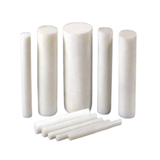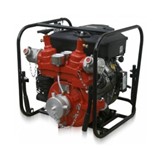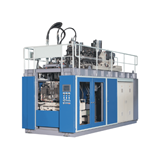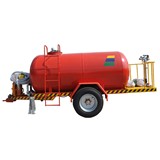Little wonder waste has become a topical issue.
Country Australia is where you seen them. Fat round discs, green, black or blue, like giant urethane skateboard wheels lined up in rows in farm fields. Not that they are meant to roll away.
Each is a bale of silage or livestock feed, its nutritional value preserved by its sheath of silage wrap. Plastic sheeting that’s usually burned or sent to land fill after one use. And that’s an issue the plastics industry doesn’t need.
Part of the problem is that no one knows how much silage sheeting and other plastic products are consumed each year by the 126,000 Australian farms dedicated solely to agricultural production.
A partial figure can be calculated using figures from the most recent National Plastics Recycling Survey released by the Plastics and Chemicals Industries Association (PACIA).
The survey, undertaken by Hyder Consulting, covers the 2008 calendar year. It rated agriculture as the sixth largest consumer of plastic products in a year when it was estimated that consumption reached 1.525 million tonnes.
The survey found that agriculture accounted for 4% of total plastic use in 2008. Based on these figures that’s about 61,000 tonnes consumed annually. But the PACIA survey does not include imported plastic products.
"The PACIA numbers only record what is manufactured in Australia and what is consumed in Australia," Ed George from farm plastics supplier Tapex told IndustrySearch.com.au.
"It doesn’t take into account imported plastics and while it’s anyone’s guess of what proportion the local plastics producers are supplying in agriculture, I would be very surprised if it was half. In fact I would think it was very much less than half," George said.
The head of Tapex’s environmental solutions division believes the real figure for farm plastics consumption is well above 60,000 tonnes.
"It would have to be double or triple that, I would have thought," George said
"And less than three per cent of what is going out is getting recycled".
Most of the silage film appears to end up in landfill, with a 2007 PACIA document – Sustainable Plastics Recovery – A Guidance statement – claiming: "A previous practice of uncontrolled, open-air burning has ceased".
George said Tapex is trying address the issue in Australia by introducing a farm plastic recycling model that has been operating in New Zealand since 2005.
Called PlasBak it started in Victoria and is being trialed in NSW in Shoalhaven with funding support from the NSW Department of Environment Climate Change and Water via the Business Treading Lightly Program.
PlasBak is due to expand into other states in 2011 but there are still obstacles to be overcome, including getting coverage for agricultural plastics under the National Packaging Covenant.
"It falls through the cracks," George said.
"The Hyder Report indicates that it’s only a small amount, only 4% of plastics is consumed by agriculture but if you include imported plastics then it could be up to 10% and it’s only one use, it’s not going into televisions and the like," he said.
Stan Moore, chief executive officer of the National Packaging Covenant said agricultural plastics like silage wrap do not fall within the APC guidelines, which focus on consumer-related packaging.
"It’s a regulatory thing," Moore said.
"It is business-to-business and therefore sits outside of the packaging covenant.
"As soon as you go into rural or remote areas we struggle to make the numbers work from an economics point of view of bringing plastics back to a central point.
"The energy cost of bringing silage wrap back to some recycling centre would be much greater than the value of the energy stored in the silage wrap that you are trying to process."
The National Farmers’ Federation told IndustrySearch.com.au that at present, it has no policy on dealing with waste silage wrap. PACIA did not respond to requests for comment.










